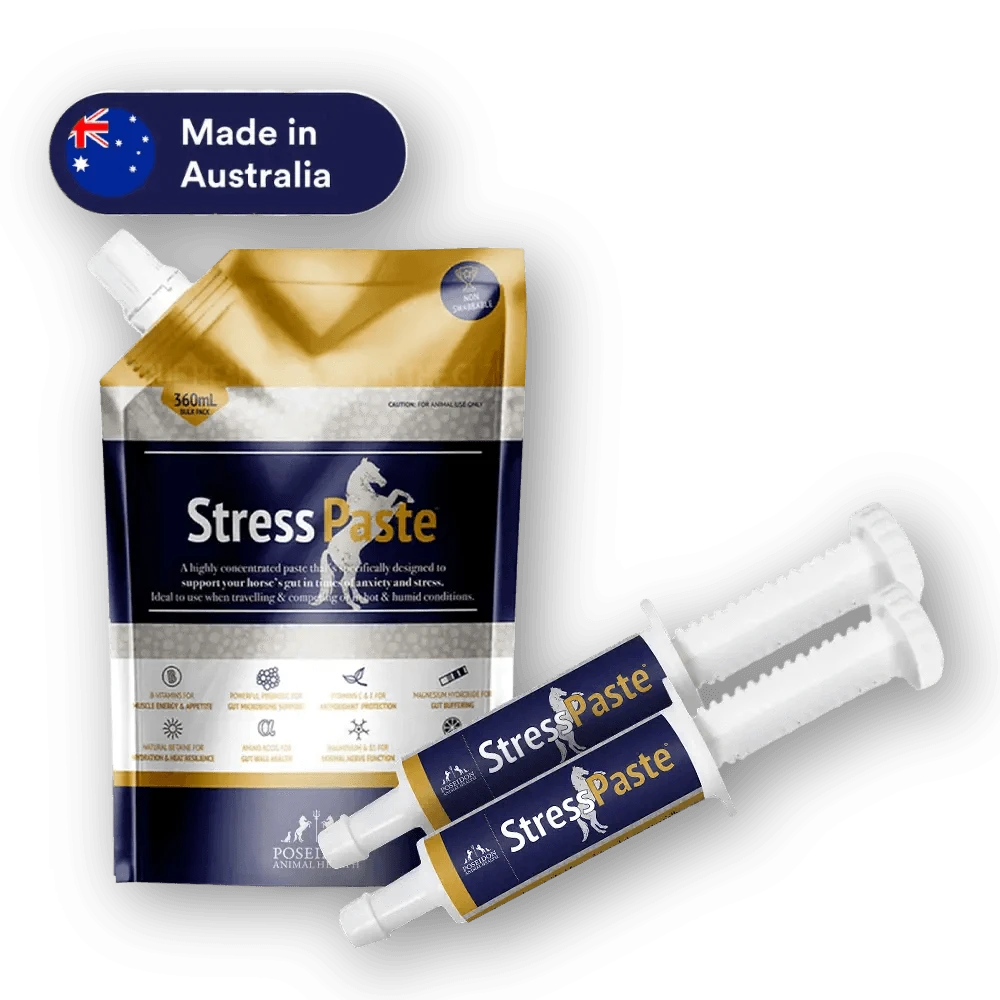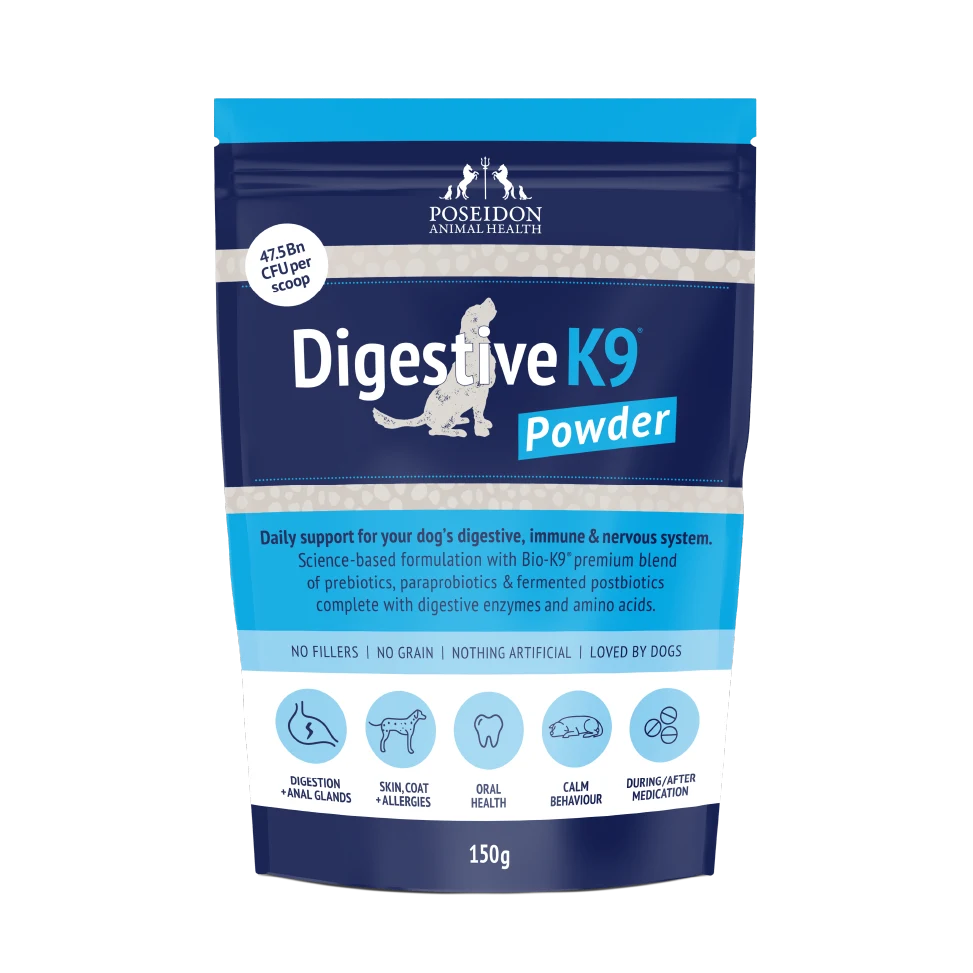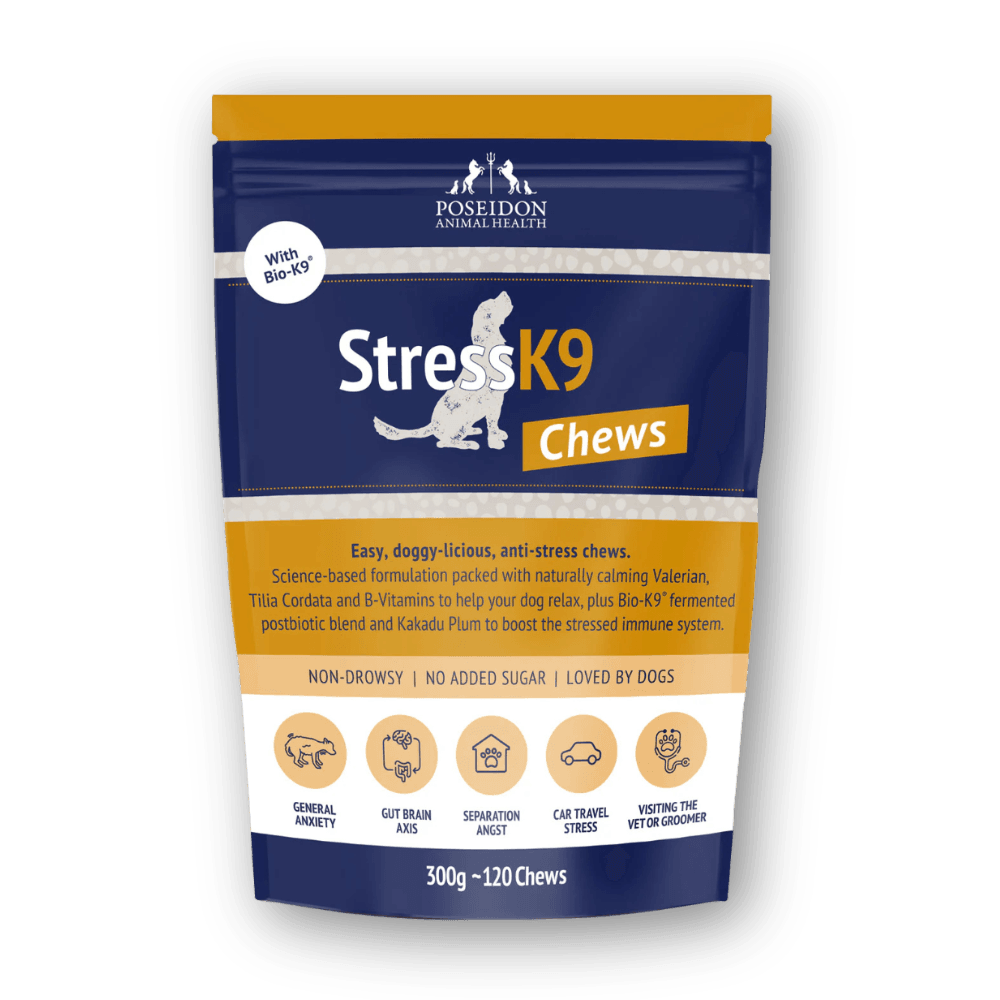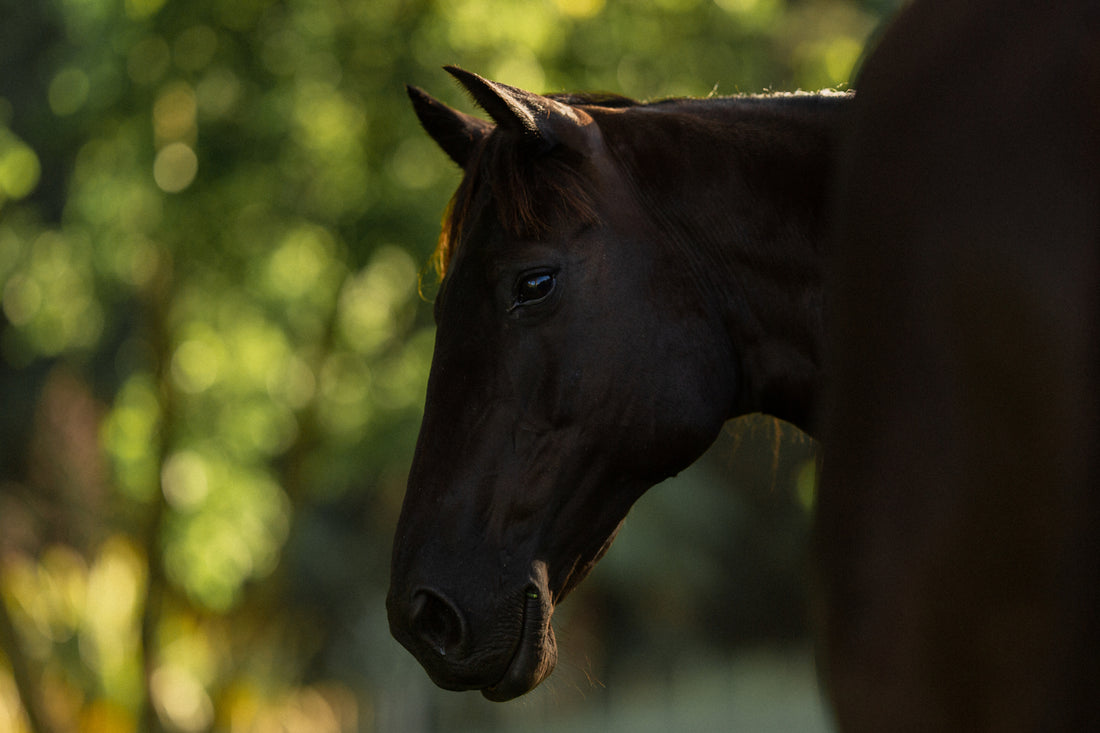
by Linda Goldspink-Lord
How can we tell if our horses are in pain, and help them feel better?
As a horse owner, there’s nothing worse than seeing your horse in pain. Especially if you have no idea what is causing it - or what to do about it. Even worse, your horse can be in pain without you realising anything is wrong, meaning they live through each day quietly dealing with constant pain.
Horses have evolved to not show pain and vulnerability to predators, and we also train them not to be reactive. As a result, horses have become so stoic that they will often tolerate high levels of pain before showing any obvious outward signs.
Fortunately, as we continue to learn about horses’ behavior through research, we are starting to recognise the subtle signs of when a horse may have gut pain.
Here are five warning signs that indicate your horse may be suffering pain in their gut, and need your help.
Pain in Horses Symptom 1: Girthy And Sore Around The Gut
Girthiness and reactiveness around the gut area is very common in horses. Most of the time horse owners don’t really give it too much thought, and put it down to the horse resenting the girth being done up. However, it’s worth looking a little deeper.
The area where horses tend to get girthy and sore sits near the stomach, but also right above the large colon which is part of the horse's hindgut.
If your horse is unusually girthy and appears sore to touch around this area, it’s possibly due to something going wrong in the horse’s stomach or their large intestine!
Through research, we are starting to really understand how much the way we feed and manage our horses affects the health of our horse’s gut, and how easy it is to create a hindgut environment that will cause pain and inflammation.
If your horse is ‘girthy’ it is very possible that they have pain and/or gastric ulcers in the stomach, or pain and inflammation in the hindgut.
We know that the gut is the ‘engine of the horse’. Anything wrong with your horse’s gut will cause other health and even performance issues for your horse.
Pain in Horses Symptom 2: Anxious Behaviour
Do you notice your horse becoming stressed or anxious, with behaviour that becomes worse in competition or other stressful/unpredictable and uncontrollable situations?
This is possibly a sign of poor gut health and if it is, you need to address it quickly before nervous behaviours become habits - or even worse, the stress contributes to leaky gut.
Stress in a horse is caused by many things, but here are a few that are linked to your horse’s gut:
-
Lack of B-vitamins.
B-vitamins, and particularly vitamin B1 are essential for calm, safe behaviour. If you unbalance the bacteria in your horse’s gut, the ‘bad’ bacteria destroy vitamin B1 (the most important one for calm behaviour) and create deficiency that can lead to anxiety. -
Lack of happy hormones.
Research in humans is showing that our bacteria produce a large portion of all of our circulating happy hormones like dopamine. Unbalance the bacteria and you may get problems like anxiety and depression. -
Gut Pain.
We know that when horses experience gut pain (for example from gastric ulcers and hindgut acidosis) their behaviour changes. Anxious behaviours are commonly noted by owners of horses with diagnosed gastric ulcers or hindgut issues, and research backs up the direct link. Think about it. If someone splashed acid onto your skin that would hurt right? Think about that happening in your horse’s stomach or hindgut and how painful that must be!
And here is the kicker. In other animal species, including humans, researchers are showing that stress itself changes gut bacterial populations and leads to inflammation and physical damage to the gut wall… Which can only lead to even more pain and stress!
So how do you stop your horse getting stuck in this vicious cycle?
Good news! Keep your horse’s good bacteria happy, and they will keep your horse happy and pain free.
And where do good bacteria live?
You guessed it - in the horse’s hindgut.
However, your current feed regime, or stress events, may be making your horse’s gut too acidic.
An acidic gut kills good bacteria, and promotes the proliferation of the starch digesting “bad bacteria” - causing stress, impaired performance, and possibly leading to physical sickness.
So, the key to reducing stress is to:
- Reduce acidity in the gut
- Produce more good bacteria
- Produce more b-vitamins and happy hormones
- Minimise stress events where possible
- Prepare for and manage stressful situation
- Provide access to forage while travelling, yarded or stabled
- Have Stress Paste on hand.
How do you reduce acidity in your horses gut?
The number one cause of high acidity in a horse’s gut is diet. A diet that is too high in uncooked/unmicronised starch and indigestible sugars and not enough fibre can create gut dysbiosis.
So what can you do? Less grain, more fibre!
Something you can apply straight away to help your horse is to replace some of those starches and sugars with more fibre! If you’re feeding a large amount of concentrate or grain-based feeds, it’s likely you are not meeting your horse's fibre requirement, and you’re increasing the chance of your horse's hindgut becoming acidic, which will lead to pain and inflammation. If you are feeding raw grain, the chance of this happening is much greater again.
So what can you do? Less grain, more fibre!
This will also help to reduce the girthiness of your horse - as you balance the bacteria, inflammation and pain decreases. Leaving you with a happy, healthy and gut-pain free horse.
It’s really that simple. We should never feed more than 100g of starch and sugars per 100kg of bodyweight per meal; or a maximum of 200g per 100kg bodyweight per day. For a 500kg horse this means that we shouldn’t exceed 500g starch per meal or 1000g starch per day.
Let’s take a look at grains and their starch levels:
- Oats contain the least starch of the common grains fed to horses and are around 50% starch
- Barley is next up at around 60% starch
- Maize (Corn) is the highest at around 70% starch.
So for a 500kg horse, we can feed up to 1kg of Oats per meal, but only 800g of Barley or 700g of Maize (Corn).
These levels are often exceeded as horse owners are feeding several kg of a complete feed with a high grain content. If you are worried you are feeding too much grain, use these numbers as a guide - and ask your feed manufacturer to confirm the starch content of their feeds.
Using Stress Paste can also be a game changer - just read the reviews from horse owners on the product page! Stress Paste is designed with the aim of minimising disruption to the horse's stomach and hindgut caused by stress events, supporting repair and recovery, and the nervous system.

Pain in Horses Symptom 3: Unable To Gain Weight, Topline Or Muscle
You keep adding more and more feed to your horse’s diet, but they simply won’t gain any weight. He won’t put on muscle, he won’t put on condition - and you’re getting confused, frustrated, and going broke!
Let’s look deeper into how food is processed in the horse to understand why.
A lot of digestion happens in the hindgut of your horse.
When the horse’s hindgut is disturbed, the bacteria are unbalanced and the wall of the gut, which absorbs nutrients, gets damaged so it doesn’t function properly. A damaged gut lining can’t process the food your horse has in their hindgut.
An unhealthy hindgut is caused by:
- Low forage and diversity of forage in the horses diet
- High intake of indigestible starch (grains, etc)
- High fructans (too much “grass sugars”)
- Stress, both mental and physical
- Stabling or travel, particularly where the horse doesn’t have constant access to forage
- Big meals which can’t be fully digested
You can improve these factors to improve your horse's hindgut health, and increase their ability to gain weight and build condition. You will also be reducing any gut pain they suffer from by improving their diet to support good hind gut health.
If you think your horse needs extra digestive support, choose Digestive RP as their daily gut supplement, as it contains two digestive enzymes as well as higher levels of prebiotics and postbiotics.
Pain in Horses Symptom 4: Loss Of Appetite / Fussy Eater
If it really hurt when you ate food, would you be keen to eat meals? Probably not!
Loss of appetite is one of the most commonly recognised symptoms in horses with diagnosed gastric ulcers… and we think it is just because it hurts to eat!
Loss of appetite is also caused by a deficiency of Vitamin B1. We need to ensure we are feeding horses enough fibre and that our horse’s hindgut is healthy, so that normal Vitamin B production can occur. We can also look to supplement our horses diet with B vitamins to ensure they are getting enough.
The best way to improve a horse’s appetite is to keep your horse’s gut healthy!
It’s so important to understand how to feed horses in a way that helps to prevent ulcers and to balance the bacteria in the horse’s hindgut.
The first step is replacing indigestible starch with more fibre in your horse’s diet. For a comprehensive guide on feeding your horse for better gut health, get your free e-book on feeding for gut health now.
Changing the diet will make huge improvements to your horse’s gut health. If you think your horse needs extra gut support, choose Digestive RP as their daily gut supplement, as it contains even higher levels of our dual action pH buffers and prebiotics and postbiotics than the popular Digestive EQ.

Pain in Horses Symptom 5: Scouring
Scouring happens when something has gone wrong in the horse’s gut and it can no longer do its job properly.
For example, if the hindgut is acidic from too much starches and fructans, then the balance of good/bad bacteria gets skewed, lactic acid is produced, absorption surfaces are damaged, nutrients can’t be absorbed, water floods into the gut and your horse scours.
It all starts with what gets fed into the gut.
So to fix scouring, we need to improve the horse’s diet by reducing starches and sugars and increasing fibre using the steps above, which will fix the acidity level of the gut and let the good bacteria in the gut microbiome do their job!
We get countless horse owners reporting that their horse’s scouring issues are gone after adding Digestive EQ to their diet, which is most likely because the prebiotics and post biotics are supporting a happier, healthier gut - so we do recommend feeding Digestive EQ if your horse is scouring.
Feeding Horses for Great Gut Health - and to prevent pain
Once you’ve fixed the fundamentals by changing your horse’s diet from starches to fibres, it’s time to add some more detail into the mix…
If you need more calories look to include highly digestible or super fibres first. These will increase the calorie density of your horse’s diet, as they contain more calories than hay or pasture. Next you can supplement the horses diet with fats and oil to around 20% of the horses total diet as these are safely absorbed by the horse and won’t mess with the hindgut balance like starch and sugar will. Lastly, make sure your horses diet is balanced using either a complete feed at the recommended feeding rates (ensuring you’re not feeding too much starch), or by using a combination of fibre based feeds and fats (most horses can do without grain altogether) and balancing it with a quality vitamin and mineral supplement like Digestive VM.
Sign up here to get the free ebook now.







